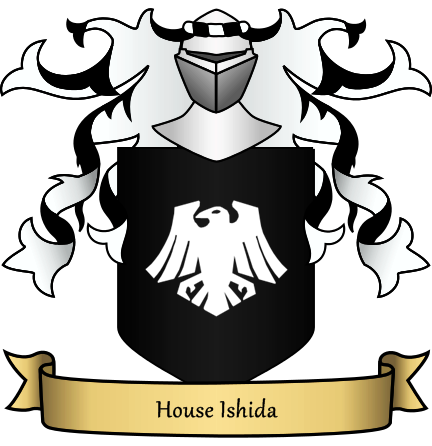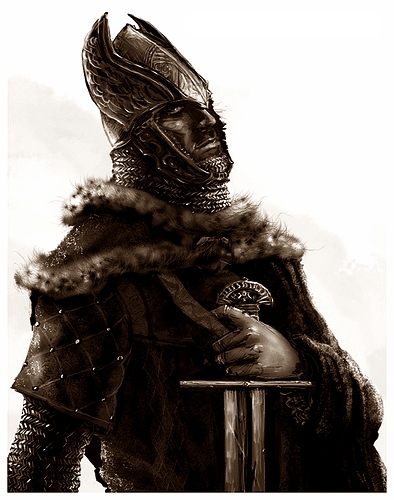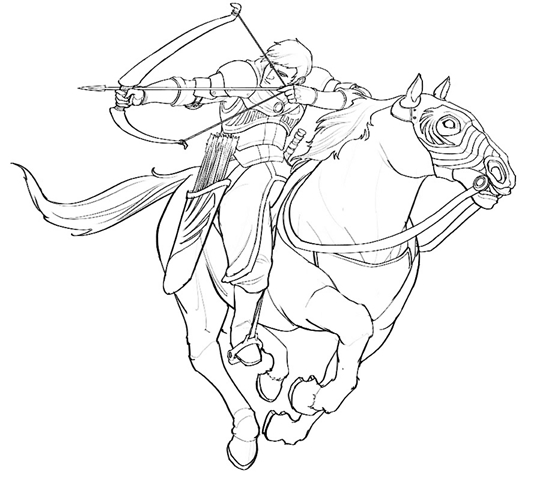Ishida Family
Contents
House Ishida
Origins
The origins of House Ishida are lost to time, but tradition holds that they are descended from a line of Far Eastern nobles who fled from their homeland generations ago. Ishida nobles can now be found all over the world, though the main branch of the family is head-quartered on Atamara.
As a result, most Ishida nobles have hair as black as night, a lingering reminder of their oriental heritage.
Present Day
Under the leadership of Mizuhiro the Ishida managed to elevate themselves into the ranks of the Atamaran nobility. Originally from Sauvia, during the Great Atamaran War Mizuhiro saw fit to relocate the family home and its heirlooms to Craigmore. They have maintained an active presence in Atamara ever since.
Heraldry
Heraldic device of House Ishida
The heraldic emblem of House Ishida is a stylised raven with outstretched wings. It is often featured as an argent charge upon a sable field.
The Raven is seen as a creature of cunning and intellect, both qualities prized by the Ishida. The Raven is also a common sight on the battlefield, a reminder to Ishida nobles that one should not fear battle, for there is much opportunity in war.
The primary colour of House Ishida is a hue that falls between midnight blue and sable, as found most commonly on the cloaks donned by those in the House's employ.
Many Ishida nobles adopt the phrase "In midnight clad" while signing off in letters as a reference to the House colours which they bear with pride.
Residence
House Ishida's seat is the Ravenholme, an imposing tower built of smooth black rock. Exceedingly lofty in comparison to the structures around it, the Ravenholme is both a fortification and a residence. Barrack spaces and living quarters have been hewn into the walls of the lower levels, ready to house the Ishida's troops as well as provide guest facilities for visiting nobles.
The Ishida themselves occupy the upper floors, commanding a spectacular view of Craigmore's plains. Compared to the homes of many noble families, the Ravenholme's interiors tend to convey a dark, brooding ambience. Wall-mounted candles provide a measure of light, as many of the hallways and rooms have little more than arrow-slits for windows. Furs are a common item, both as decoration and for warmth.
The Raven Guard
A Centurion of the Raven Guard
House Ishida maintains a standing force known as the Raven Guard. Much of the Raven Guard is structured into company-seized formations called Wings. By birthright, an Ishida noble can choose to take on command of a single Wing of the Guard, and it becomes the noble's responsibility to see that their Wing is maintained and trained for service to realm and family.
Raven Guard Hierarchy
As each Wing is seconded to an Ishida noble, Raven Guard commanders are always members of the House.
Below the nobles are the Centurions, the Guard equivalent of a Captain. Centurions are hand-picked individuals groomed to lead their Wing into battle. While the Wing looks towards its noble commander for strategy, it is often the Centurion's courage and leadership that decides his troops' actual performance in battle.
In times of peace Centurions are given the privilege of being schooled in tactics and philosophy. Such education is costly and difficult to obtain outside of the nobility, and so the post of Centurion is one that is afforded much respect by the common soldiery.
Each Wing is further broken into smaller, squad-sized groupings known as Talons. A Talon is a squad of 8 to 10 men lead by a Decurion, usually the most senior man in the Talon. The Decurion's role is to provide individual leadership to his Talon, as well as to promote camaraderie between his men.
The First Wing
The Horsemen of the First
The First Wing forms the elite of the Raven Guard and is always designated to the current leader or heir of the House.
Compared to the rest of the Guard, the composition of the First is extremely flexible and subject to the noble commander's preferences. They will, however, always be better equipped and trained than the other Wings.
The First are currently deployed as unorthodox heavy cavalry. Helms and masks forged in the stylised likeness of a raven hide their faces from view. Composite armour of scale and plate, dyed as black as night, provide a balance between mobility and protection. A hooded cloak of deep crimson completes the outfit, secured with a clasp bearing the insignia of the Raven Guard.
In battle the First Wing rides the charge on barded black destriers. Wielding a matched pair of swords, each man is trained to fight ambidextrously even on horseback. A code of honour binds them to utter silence while they don their masks, forcing them to communicate commands in battle via hand gestures.
Clad as such and inhumanly silent, the black Horsemen of the First are an unnerving sight, for they show no mercy and take no prisoners.
The Battle Wings
The other Wings of the Guard are trained to fight as tactical infantry.
Raven Guard infantry doctrine revolves around the use of heavy shields large enough to cover a man from chin to shin. The men are taught to fight in close, defensive formations, locking shields to present a stout barrier of wood and steel against any foe. Wild swings are discouraged; each soldier is trained to make precise stabs using his gladius while keeping the rest of his body protected behind his shield.
Some commanders may choose to equip their men with missile armament, such as short bows or light javelins. Other commanders may shun ranged weaponry in favour of heavier armour for their infantry. Regardless of preference, the Raven Guard core precepts of discipline and cohesion in the battle line always take precedence.
Equipped with such tactics and often clad in scale or mail, it is a small wonder that the Raven Guard infantry are known for an innate stubbornness. They will always prefer to fight in the box formation when possible, and will almost always fortify their camp.
Of course in practice, Wings of the Guard can operate across vast distances with only sporadic contact with one another. It is not uncommon for a certain amount of variation between the size and structure of the various Wings employed by Ishida nobles.
The Ravensworn
The positions for Centurion-hood in the Guard are few, but the applications from the rank-and-file are many; an unsurprising fact given the various benefits that Centurions enjoy.
Unsurprising also, then, that applicants are put through a series of stringent tests and training regimes with demanding standards of performance. Many applicants fail at some point and are allowed to send their names for reconsideration on one condition: they must serve a year's tenure in the Ravensworn.
The Ravensworn are taught methods of warfare which set them apart from the Battle Wings. They are trained to use both the sword and the short bow, with an emphasis on initiative and martial excellence, values that will serve them well should they eventually make it to a command position.
In battle the Ravensworn serve as a tactically flexible light cavalry force, their lighter armour and unbarded horses granting them much agility at the cost of protection.
Much is expected from the men, as the desire for command must be matched by an equal willingness to duty and service. As a consequence the Ravensworn are often called upon for demanding military assignments far from home. These men often ride into battles with fervour, hoping to distinguish themselves as potential candidates for promotion to Centurion.
Notable Members
- Mizuhiro Ishida, Atamara, Cagilan Empire
- Tetsuko Ishida, Atamara, Talerium (Hiatus)
- Himeko Ishida, Dwilight, Corsanctum
- Isamu Ishida, Atamara, Cagilan Empire



